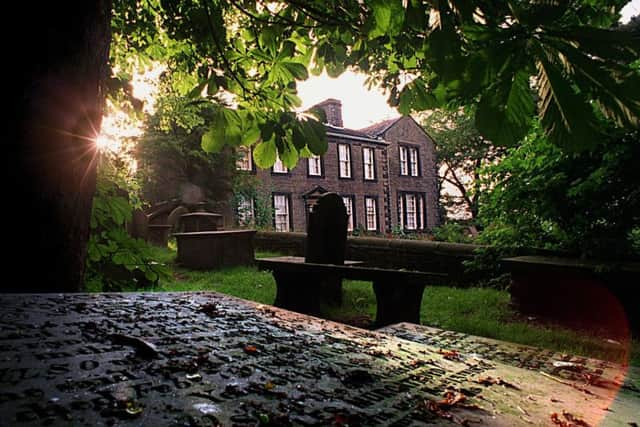The secret stories of the Brontës: The magical fantasy worlds which made the family famous


Although it is the three sisters, Charlotte (1816–1855), Emily (1818–1848), and Anne (1820–1849), who are known for their individual collections of poems and novels, their brother Branwell was also part of the creative world which formed their childhood and influenced the classic novels they are now famed for.
The themes of morality, class and gender frequently feature in the works of the three sisters, but the Brontës creative imaginations also dove into the realm of science fiction and fantasy, writing stories bound by science, a subject not widely associated with their works.
Advertisement
Hide AdAdvertisement
Hide AdThe childhood of these four Brontë children was filled with literature from the very start, with their father giving them the run of the library. Not only did this inspire their minds and encourage them to write, but it enabled them to create their own literary and fantasy worlds.


Anne, Branwell, Charlotte and Emily, imagined up countries which became part of ‘The Glass Town Federation’, with Branwell and Charlotte inventing the kingdom of Angria, and Emily and Anne creating Gondal.
These were worlds in which they could escape and let their minds run free, but the creation of both Angria and Gondal hugely impacted on the novels they became famed for, as elements of fantasy were brought into novels such as Wuthering Heights and Jane Eyre.
Angria and Gondal were both intricately planned, with geographical locations and other magical kingdoms existing within these fantasy islands.
Advertisement
Hide AdAdvertisement
Hide AdCreated by Anne and Emily and located in the North Pacific, just north of the island of Gaaldine, Gondal is a world of moorland and snowy weather, drawing influence from the Yorkshire moors, a subsequent focus of Emily’s novel, Wuthering Heights.


Supernatural fantasy seems to constantly creep into Wuthering Heights, emerging from the mysterious character of Heathcliff, whose background is never fully revealed. The narrative also intertwines ghoulish and gothic elements into it.
On the other hand, Branwell and Charlotte’s kingdom of Angria is rich with detailed characters, including a Prime Minister, a Duke and a world filled with political and military aspects.
Charlotte’s novel, Jane Eyre, incorporates fantasy elements from the very beginning. When she first meets Rochester’s dog Pilot out in the woods, the first thought of the title character is of a mythical black dog whom is though to haunt the North of England. Rochester then repeatedly refers to Jane as a ‘sprite’ and a ‘fairy’, claiming that she ‘bewitched’ his horse.
Advertisement
Hide AdAdvertisement
Hide AdDuring Charlotte's time as a teacher at Roe Head School, she kept a collection of jottings, poetry and prose, along with accounts of things happening at school, but this intermingles with the fantasy world of Angria, as the accounts of this journal show her thoughts drifting away into the fantasy world, before something in the real world jolts her back to reality.
The fantasy worlds of the four Brontë children included the creation of little magazines, detailed drawings, and intricate maps, showing just how thorough and real these words were to them all, and why they subsequently had such a deep effect of the novels of the three sisters.
The stories created from these fantastical worlds were written in dozens of miniature books, manuscripts of these stories including titles such as A Peep into a Picture Book and The Spell, showing the intricate craftsmanship which went into these fantasy worlds. These manuscripts were the size of matchboxes and bound by thread, becoming secretive, private worlds belonging only to the four children.
The depth and breath of the Brontë family’s imagination is clear, not only in the world of romantic realism, but in the realms of fantasy and science fiction. The deeply creative imaginings which emerged from their fantastical worlds influenced the rich narratives of the classic stories, which subsequently made the three sisters profoundly famous, and which continue to be perpetuated to this very day.